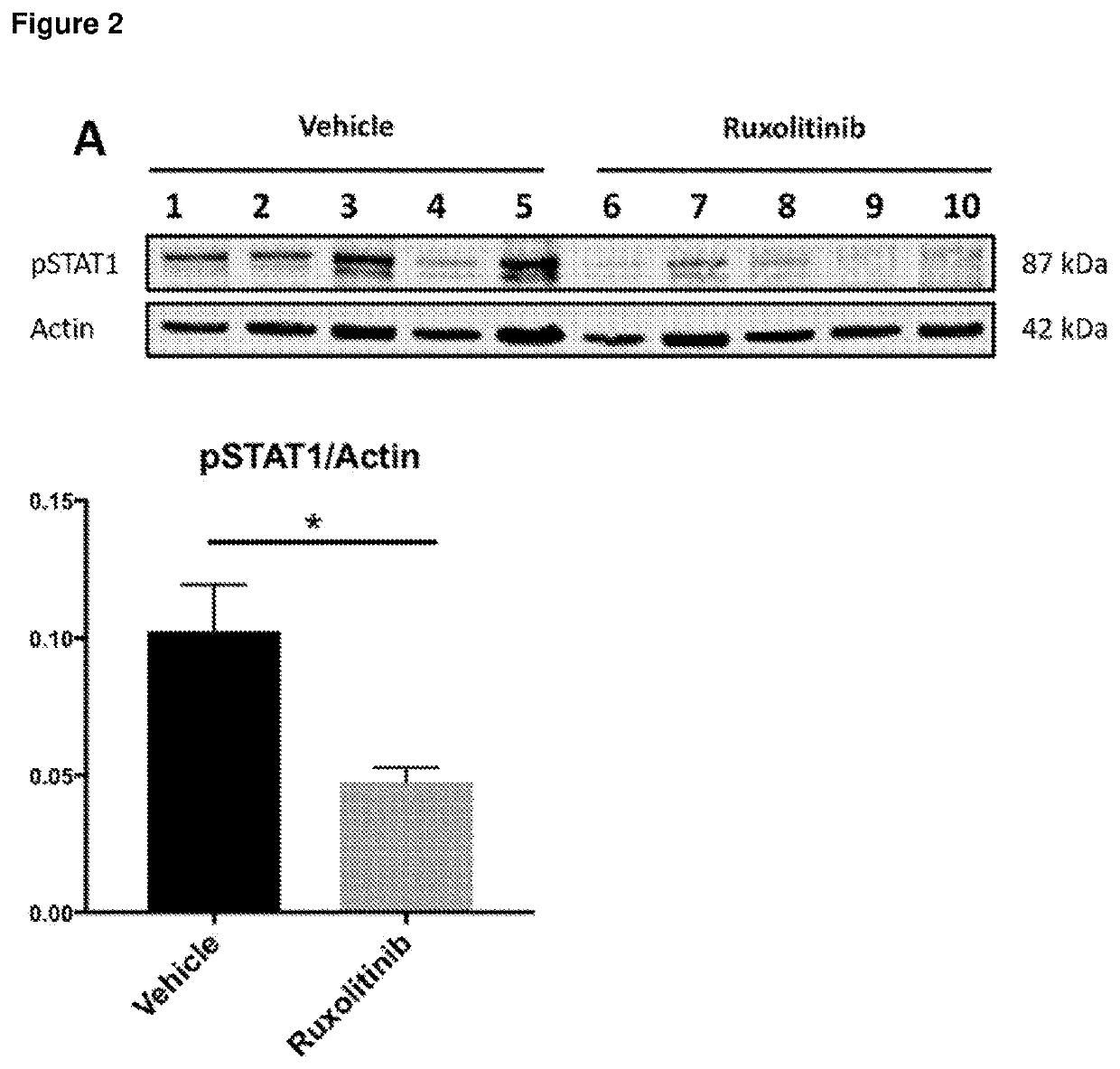Type i diabetes therapy
a type i diabetes and insulin therapy technology, applied in the field of type i diabetes therapy, can solve the problems of extreme hunger and thirst, abnormal high blood glucose level, weight loss, etc., and achieve the effects of reducing the level of proinflammatory cytokine-mediated gene expression, prolonging the production of endogenous insulin, and preventing or delaying the progression of t1d
- Summary
- Abstract
- Description
- Claims
- Application Information
AI Technical Summary
Benefits of technology
Problems solved by technology
Method used
Image
Examples
example 1
[0205]Materials and Methods
[0206]Mice
[0207]All mice were bred and maintained at St Vincent's Institute. Mouse litters were administered their respective treatments (doxycycline and / or ruxolitinib) at the appropriate ages described below, prior to determination of their genotype. Genotyping of mice by PCR occurred after weaning, following which they were assigned to their appropriate cohorts according to genotype and treatment (FIG. 1A). Experiments were conducted in accordance with accepted standards of humane animal care, and were approved by the St Vincent's Hospital Animal Ethics Committee (Melbourne, Australia).
[0208]TIP Mice
[0209]Generation of tet-off TIP2 mice has been previously described in Jhala et al., (2016) JCI Insight: 1: e86065. Only progeny carrying both tetO-Ins2 and IEα-tTA transgenes were classed as TIP2 mice, and mice with a single transgene were used as controls. To turn off proinsulin expression, all TIP2 mice received doxycycline (10 mg / L) via mothers' drinking...
example 2
m Combination Therapy with JAK Inhibitor and Proinsulin-Specific Immunotherapy after Onset of Insulitis Prevents or Delays Diabetes Onset
[0248]Materials and Methods
[0249]TIP Mice
[0250]Generation of tet-off TIP2 mice was as describe in Example 1. To turn off proinsulin expression, all TIP2 mice received doxycycline (10 mg / L) via mothers' drinking water from embryonic day 12 (transplacentally) until weaning (day 21 post-birth) (translactationally), after weaning the mice were administered doxycycline via drinking water till 8 weeks (56 days) of age. Removal of doxycycline allowed the maximal recovery of proinsulin expression by 12 weeks (84 days) of age.
[0251]JAK1 / JAK2 Inhibitor
[0252]The JAK1 / JAK2 inhibitor was dissolved in vehicle comprising 5% dimethyl acetamide, 0.25% phosphoric acid and 0.5% methyl cellulose. Mice receiving JAK inhibitor were treated with 10 mg / kg dose twice daily by oral gavage from 12 to 14 weeks (day 84-98) of age. Control mice received the same volume of vehic...
example 3
of IGRP-Specific Cells
[0257]In NOD mice, the response against IGRP is prominent and T cells specific for IGRP can be easily detected as they are more numerous than proinsulin-specific T cells (2). TII mice (tetracycline-inducible IGRP) that are analogous to the TIP2 mice described above were generated so the effect of combination therapy on the number of antigen-specific T cells could be assessed.
[0258]Materials and Methods
[0259]TII mice received doxycycline until 10-weeks of age. After doxycycline was removed, IGRP was expressed in antigen presenting cells of mice carrying both tetO-IGRP and IEα-tTA transgenes. Mice were treated with 10 mg / kg JAK inhibitor or vehicle between 13-15 w of age for 2 weeks. Mice were analysed at 2 weeks (harvest immediately after stopping JAK inhibitor), 4 weeks (harvest two weeks after stopping JAK inhibitor), and 6 weeks (harvest four weeks after stopping JAK inhibitor). Data is from 1-3 experiments per time point with 3-4 mice per group / experiment.
[0...
PUM
| Property | Measurement | Unit |
|---|---|---|
| Gene expression profile | aaaaa | aaaaa |
| Weight loss | aaaaa | aaaaa |
Abstract
Description
Claims
Application Information
 Login to View More
Login to View More - R&D
- Intellectual Property
- Life Sciences
- Materials
- Tech Scout
- Unparalleled Data Quality
- Higher Quality Content
- 60% Fewer Hallucinations
Browse by: Latest US Patents, China's latest patents, Technical Efficacy Thesaurus, Application Domain, Technology Topic, Popular Technical Reports.
© 2025 PatSnap. All rights reserved.Legal|Privacy policy|Modern Slavery Act Transparency Statement|Sitemap|About US| Contact US: help@patsnap.com



